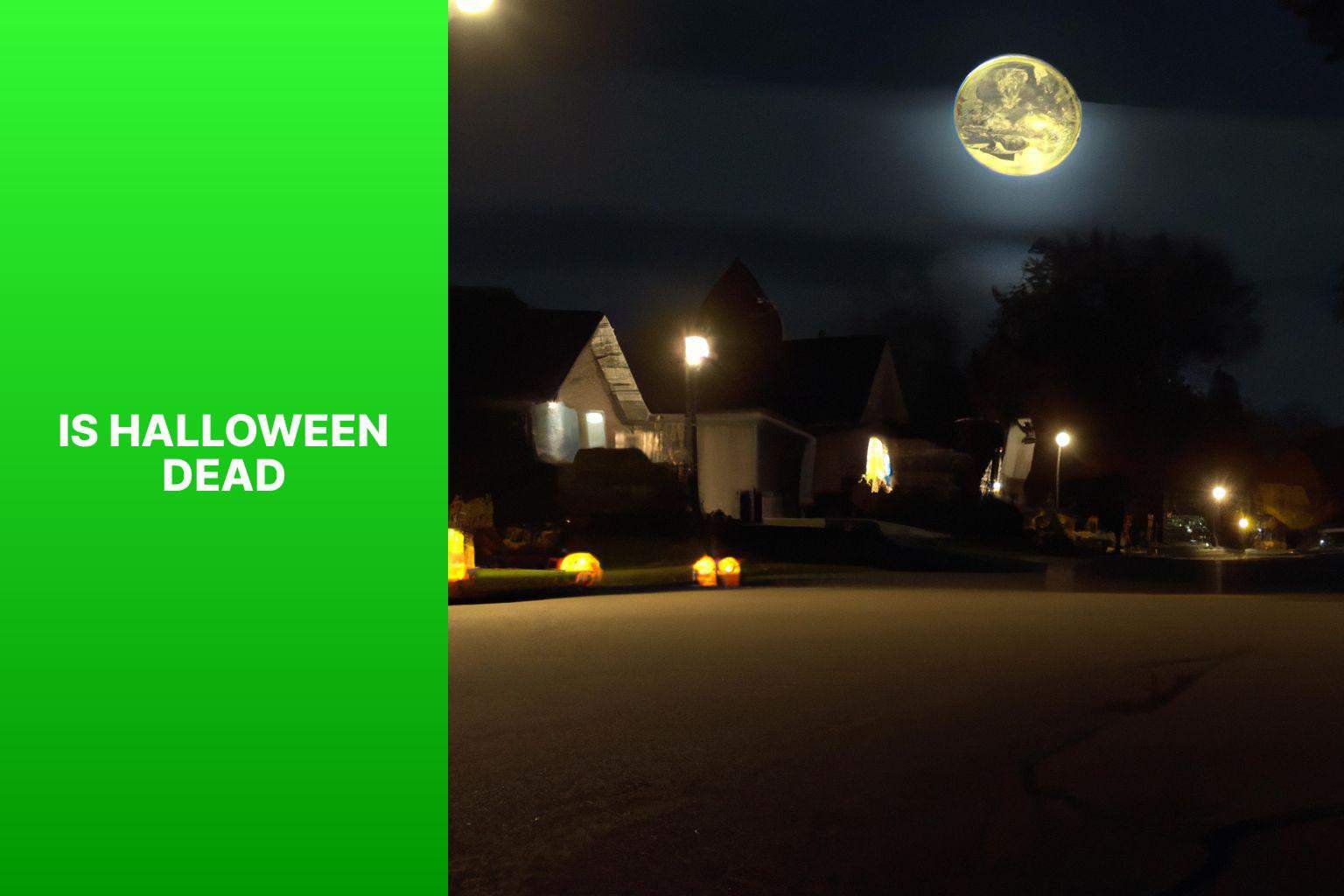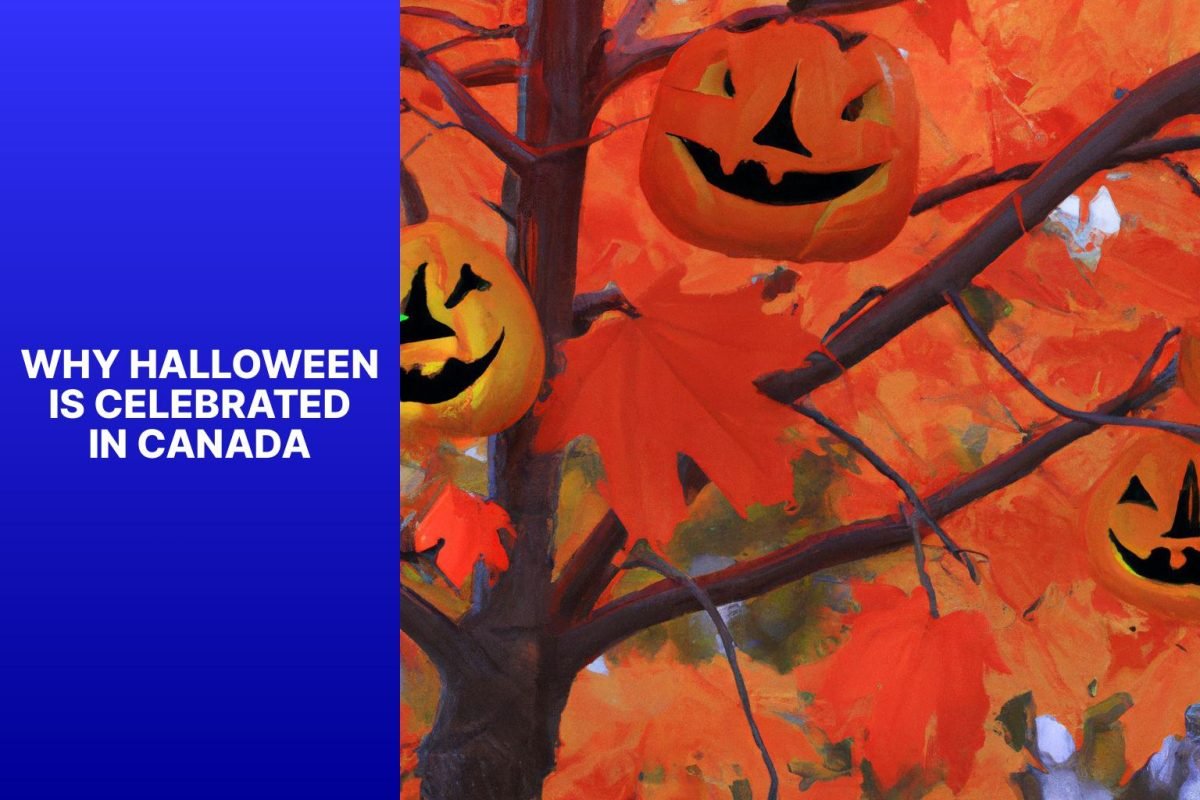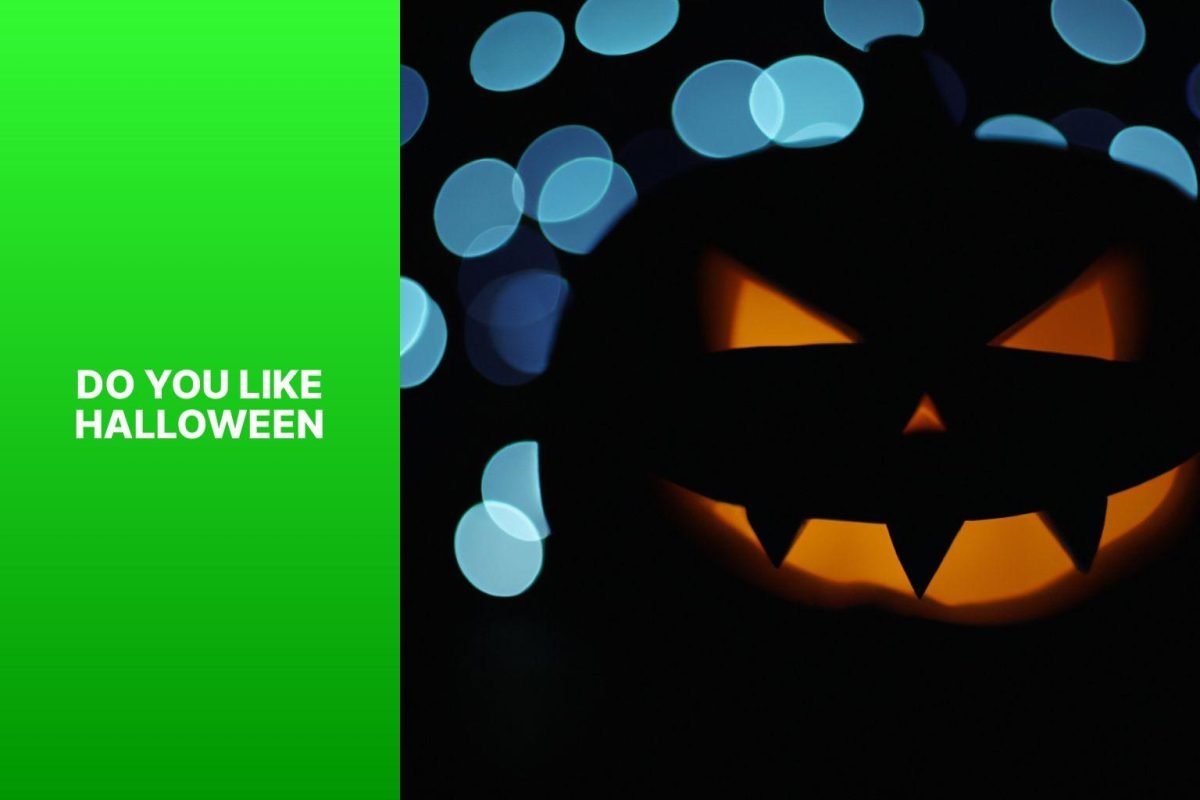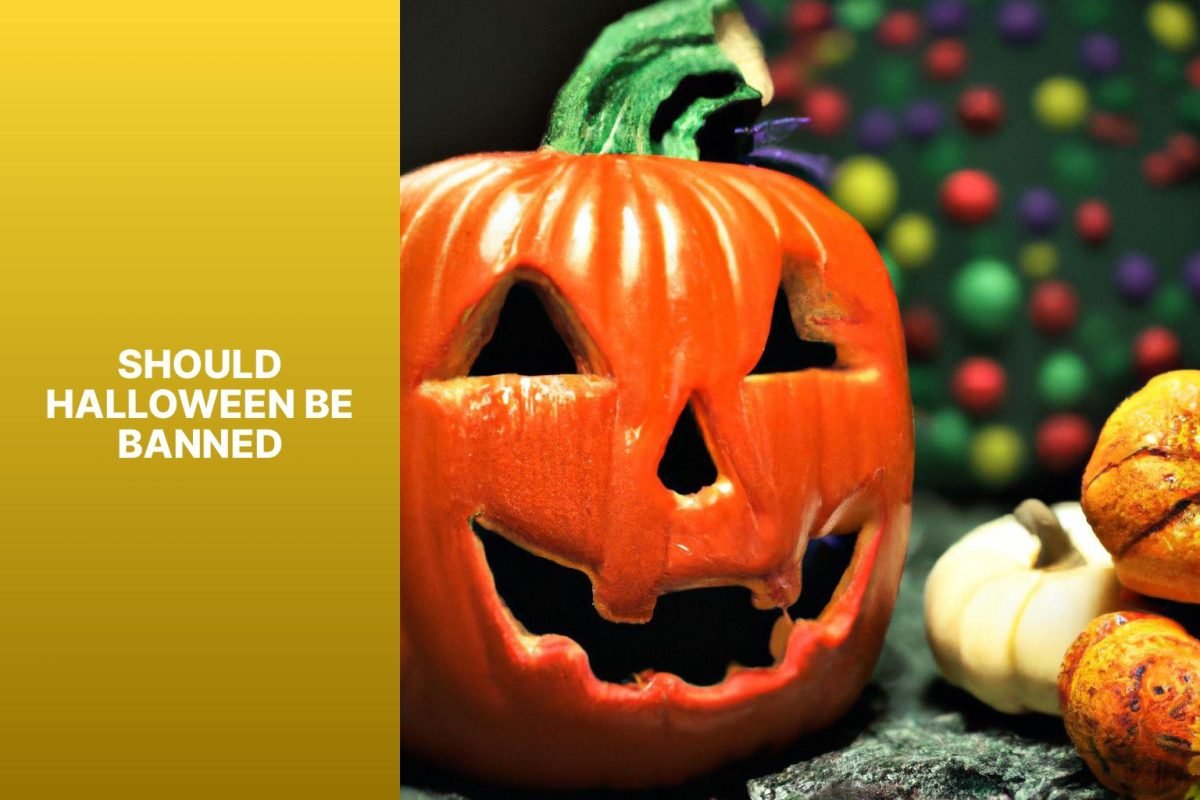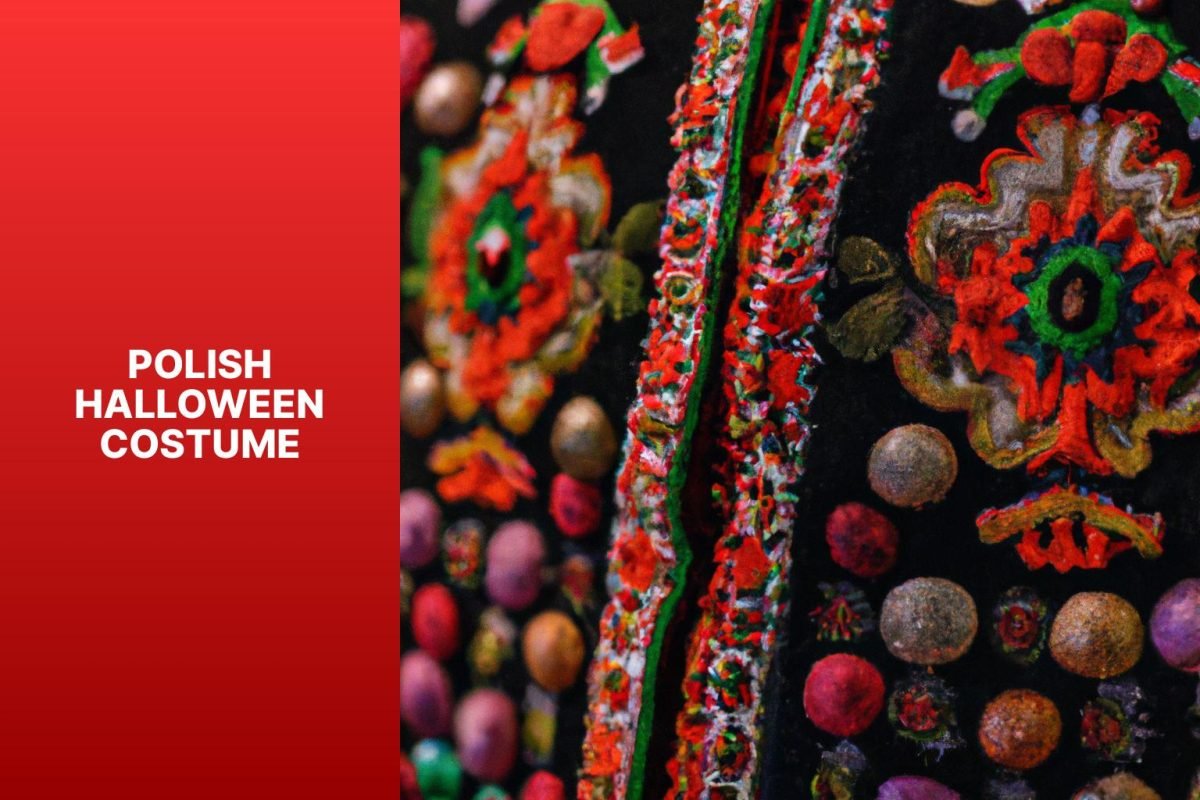Is Halloween dead? This question arises as the beloved holiday undergoes changes and faces challenges in the modern era. To understand the current state of Halloween, it is essential to delve into its rich history. The origins of Halloween can be traced back to ancient Celtic festivals, such as Samhain, which marked the end of harvest season and the beginning of winter. Over time, Halloween traditions evolved, incorporating elements from European folklore and Christian practices.
Despite its historical significance, Halloween has become more than just a traditional celebration. It has gained immense popularity, especially in popular culture. Halloween-themed movies, TV shows, and literature have captivated audiences worldwide. The increased commercialization of the holiday has sparked debates and controversies regarding its authenticity and cultural appropriation. There has been a noticeable decline in participation in Halloween activities in recent years.
Various factors can impact the future of Halloween. Societal changes, such as shifting demographics and cultural norms, could influence the way Halloween is celebrated. The advancement of technology has both positive and negative implications for Halloween traditions. It provides new opportunities for immersive experiences and online communities but also introduces challenges in terms of safety and replacing traditional activities with virtual alternatives.
Reviving Halloween requires community involvement and innovative approaches. Local neighborhoods and organizations can organize inclusive Halloween events that promote community bonding and participation. New approaches to celebrations, such as alternative trick-or-treating methods or incorporating cultural diversity, can breathe new life into the holiday while respecting its roots. By adapting to the changing times and embracing creativity, Halloween can continue to thrive as a special occasion for generations to come.
Key takeaway:
- Halloween remains a popular holiday: Despite challenges and controversies, Halloween continues to be celebrated and has a rich history.
- Halloween reflects cultural and technological changes: The evolution of Halloween traditions and the influence of popular culture and technology shape the future of the holiday.
- Reviving Halloween through community involvement and innovation: Community engagement and new approaches to Halloween celebrations can help keep the holiday relevant and engaging for future generations.
The History of Halloween

Photo Credits: Rickyshalloween.Com by James White
Discover the thrilling journey of Halloween’s origins and how it has evolved over time. Uncover the mysterious beginnings of this bewitching holiday in the sub-section on the Origins of Halloween. Delve into the captivating stories and traditions that have shaped and transformed Halloween into the enchanting celebration we know today in the sub-section on the Evolution of Halloween Traditions. Get ready for a spellbinding adventure through the history of Halloween!
Origins of Halloween
The origins of Halloween can be traced back to the ancient Celtic festival of Samhain. Samhain marked the end of the harvest season and the beginning of winter. On this day, the boundary between the living and the dead became blurred. People lit bonfires and wore costumes to ward off wandering spirits.
Over time, Samhain merged with the Christian holiday of All Hallows’ Eve, which was the evening before All Saints’ Day. Halloween is derived from “All Hallows’ Eve.”
In the 19th and 20th centuries, Irish and Scottish immigrants brought Halloween traditions to the United States. The holiday evolved into a community-centered event, with trick-or-treating, costume parties, and carving jack-o’-lanterns. These traditions remain popular today.
The origins of Halloween reflect the beliefs and practices surrounding the transition from autumn to winter, as well as the blending of Celtic and Christian traditions. Understanding Halloween’s historical roots enhances our appreciation for the holiday and its significance in different cultures.
To make your Halloween celebrations more authentic, you can incorporate traditional elements such as storytelling about Celtic mythology, organizing bonfires, and exploring Halloween folklore. Embracing the origins of Halloween adds depth and richness to your festivities. Remember, Halloween is not just about costumes and candies, but also an opportunity to connect with ancient traditions and embrace the spirit of the season.
Evolution of Halloween Traditions
The evolution of Halloween traditions is truly fascinating. Throughout history, these traditions have undergone significant changes to adapt to the shifting times and cultures. From ancient Celtic beginnings to the present-day celebrations, Halloween traditions have evolved in numerous ways.
One notable transformation is seen in the evolution of costumes. Initially, people would wear animal skins and masks to protect themselves from malevolent spirits. Nowadays, this tradition has become much more diverse. People of all age groups dress up as their favorite characters, monsters, or creatures, making Halloween a delightful and inclusive occasion.
Trick-or-treating, another Halloween tradition, has also evolved over time. Originally, it was performed to appease spirits, but now it has become an activity enjoyed by both children and adults. People stroll through their neighborhoods, going from house to house, collecting delicious candies and treats.
Jack-o’-lanterns, the carved pumpkins that adorn many homes during Halloween, are yet another example of evolved traditions. Initially, scary faces were carved into turnips or potatoes to ward off evil spirits. The introduction of pumpkins in North America gave rise to the iconic Jack-o’-lanterns we recognize today.
The evolution of Halloween traditions has also given birth to a range of haunted attractions. These include haunted houses, trails, and mazes that offer thrilling and spooky experiences during the Halloween season. They have become immensely popular and add an extra level of excitement to the festivities.
To fully embrace the evolution of Halloween traditions, one can incorporate elements from different eras and cultures into their celebrations. Whether it’s incorporating ancient rituals, wearing unique costumes, or participating in community events, embracing both the past and the present can bring depth and excitement to your Halloween festivities.
The Popularity of Halloween
Halloween, an annual celebration that has captivated people around the world, continues to be a topic of fascination. In this section, we dive into the vibrant and evolving popularity of Halloween. We explore its place in popular culture, how it has been embraced and adapted in various forms of media. We take a look at the commercialization of Halloween, shedding light on the economic aspects and consumer trends surrounding this beloved holiday.
Halloween in Popular Culture
Halloween has had a profound impact on popular culture, permeating movies, costumes, music, and decorations. The horror genre owes much of its popularity to iconic films like “Halloween” (1978) and “A Nightmare on Elm Street” (1984), which are lauded for their gripping plots, chilling antagonists, and haunting ambiance.
Year after year, individuals excitedly dress up for Halloween gatherings or trick-or-treating, typically donning costumes inspired by beloved characters from movies, television shows, and even famous personalities.
Ominous melodies such as Michael Jackson’s timeless hit “Thriller” (1982) and Bobby Pickett’s catchy tune “Monster Mash” (1962) have become synonymous with the holiday, regularly blaring at parties and on radio stations.
Halloween decorations, often mirroring popular culture, frequently showcase themes of haunted houses and feature figures like witches, vampires, and zombies, all aimed at creating an eerie atmosphere.
The undeniable influence of Halloween on popular culture is apparent as people wholeheartedly immerse themselves in its various elements. It has transformed into one of the most widely celebrated holidays across the globe.
Commercialization of Halloween
The Commercialization of Halloween has had a significant impact on how the holiday is celebrated.
Halloween has undergone an increasing level of commercialization, with businesses selling costumes, decorations, and other themed products.
Companies heavily promote Halloween-themed merchandise through various channels.
This continuous exposure to commercial messaging influences consumer behavior and encourages spending on Halloween-related goods.
The Commercialization of Halloween has also brought about the adoption of new traditions and activities, such as Halloween parties, haunted houses, and themed events that often require the purchase of tickets or admission fees.
Many businesses see Halloween as an opportunity to boost sales and generate revenue, strategically releasing new products and limited-edition items to attract consumers and drive up demand.
To combat the negative impacts of commercialization, individuals can support local and independent businesses, focus on the traditional and cultural aspects of Halloween, create homemade costumes and decorations, and promote sustainable and ethical practices.
By actively resisting excessive commercialization, individuals can restore the true essence of Halloween and foster a more meaningful celebration.
Challenges Faced by Halloween
Halloween, once a celebrated tradition, now faces its fair share of challenges. In this section, we will explore the controversies surrounding Halloween and the declining participation in its activities. Get ready for a thrilling ride as we uncover the fascinating facts, figures, and events that have contributed to these challenges, shedding light on the current state of this beloved holiday. Don’t be spooked, join us as we uncover the truth behind the challenges faced by Halloween.
Controversies Surrounding Halloween
Controversies surround Halloween, sparking debates about its appropriateness and impact. One controversy centers on the fear and danger associated with Halloween activities. Critics argue that Halloween promotes violence, vandalism, and unsafe behavior, raising concerns about public safety. Another controversy involves costumes that perpetuate harmful stereotypes or appropriate cultures without understanding their significance.
Religious and cultural sensitivities are also a point of contention. Some religious groups object to Halloween’s pagan origins and association with witchcraft and supernatural themes, believing they contradict their beliefs and should not be celebrated. Cultural appropriation is another concern, with people worried about their traditions being misrepresented or exploited for commercial gain during Halloween.
Concerns about the environmental impact of Halloween have also emerged. The excessive use of plastic and disposable decorations, as well as wasteful consumption, contribute to pollution and waste. There is a growing demand for more sustainable and eco-friendly Halloween practices.
Despite these controversies, Halloween continues to be celebrated and enjoyed by millions worldwide. Efforts are being made to address the concerns raised, including responsible celebrations, cultural sensitivity, and mindful consumption. By adopting these practices, Halloween can remain a fun and inclusive holiday for all.
Fact: According to the National Retail Federation, over 170 million Americans celebrate Halloween, spending approximately $9 billion on costumes, decorations, and related items annually.
Declining Participation in Halloween Activities
Declining participation in Halloween activities has become a major concern in recent years, driven by a combination of changing attitudes and safety concerns. One significant factor contributing to this trend is the widespread perception that Halloween has become overly commercialized. The emphasis placed on purchasing costumes, decorations, and candy can undermine the holiday’s authenticity and make it feel less meaningful. Controversies surrounding cultural appropriation and offensive costumes have prompted some individuals to opt out of Halloween altogether.
Safety concerns also play a role in the declining participation. Many parents are now wary of allowing their children to partake in traditional Halloween activities due to a heightened awareness of potential dangers, such as tampered treats or accidents during trick-or-treating. As a result, there has been a growing shift towards alternative events, such as community gatherings or trunk-or-treat events held in controlled environments, where parents feel more comfortable ensuring their children’s safety.
To reignite interest and bolster participation, communities can take proactive measures by organizing inclusive and family-friendly events that effectively address safety concerns. By providing a secure and enjoyable environment, more families will likely feel encouraged to take part. Schools and community centers can foster creativity and enthusiasm by arranging costume contests or pumpkin carving competitions, which not only enhance the festive spirit but also promote community engagement.
A valuable tip is to encourage neighbors to collaborate and organize a neighborhood Halloween block party. This type of event allows families to celebrate in a familiar and controlled setting, fostering a strong sense of community and fostering lasting memories.
Factors Affecting the Future of Halloween

Photo Credits: Rickyshalloween.Com by David Clark
Halloween, that spooky time of year, isn’t just about costumes and candy anymore. In this section, we’ll delve into the factors that are shaping the future of Halloween. From societal changes that are redefining our traditions, to the impact of technology on how we celebrate, we’ll explore the dynamic forces at play. Get ready to discover how Halloween is evolving in the face of a rapidly changing world.
Societal Changes and Halloween
Societal changes have had a significant impact on Halloween celebrations. In recent years, attitudes towards Halloween have undergone a shift due to these changes.
First and foremost, diversity and multiculturalism within society have influenced Halloween traditions. The increasing diversity in communities has emphasized the importance of inclusivity and respect for different cultures. This has prompted a reassessment of Halloween costumes and activities that may be culturally insensitive or appropriative. Nowadays, people are more mindful of the need to celebrate Halloween in a way that is respectful and inclusive to everyone.
Secondly, changes in family dynamics and parenting styles have also affected Halloween. With the advent of technology and social media, parents have become more concerned about the safety of their children during trick-or-treating. Consequently, there has been a decline in door-to-door trick-or-treating and a rise in organized community events or alternative Halloween celebrations that prioritize supervision and safety.
Moreover, environmental awareness has had an impact on Halloween celebrations. People are now more conscious of the environmental consequences of using single-use costumes and decorations. As a result, sustainable and eco-friendly Halloween alternatives such as DIY costumes made from recycled materials and reusable decorations have gained popularity.
It is evident that societal changes have significantly transformed the way Halloween is celebrated. The increased focus on inclusivity, safety, and environmental consciousness has shaped the modern approach to this festive occasion.
Impact of Technology on Halloween
Technology has had a significant impact on Halloween celebrations in recent years. Social media and online platforms have played a crucial role in allowing people to share their costumes, decorations, and party experiences with a larger audience. This has contributed to the increasing popularity and global reach of Halloween. Advancements in technology have greatly enhanced the Halloween experience. The use of animatronic decorations and special effects has made the atmosphere more realistic, creating an immersive and terrifying ambiance.
Technology has revolutionized Halloween entertainment. Streaming services and digital media offer a wide range of Halloween-themed movies, shows, and music, providing easy access to these forms of entertainment. Advancements in virtual reality and augmented reality technologies have made it possible to create interactive and immersive Halloween experiences.
Technology has made Halloween celebrations more convenient and accessible. The emergence of online shopping has made it effortless for people to find and order costumes, decorations, and supplies. Virtual events and online communities have opened up opportunities for individuals to engage in Halloween activities, even if they are unable to participate in person.
To illustrate the impact technology has had on Halloween celebrations, consider the following fun fact: according to a 2020 survey, over 30% of parents planned to utilize technology, such as virtual costume parties or online pumpkin carving contests, to celebrate Halloween with their children.
Reviving Halloween
Reviving Halloween goes beyond traditional celebrations. It’s about embracing community involvement in Halloween events and exploring new approaches to keep the spirit alive. The energy and creativity exhibited through community-driven activities and the introduction of innovative Halloween celebrations bring a fresh twist to this beloved holiday. So, let’s dive into how communities are reimagining Halloween festivities and discover the exciting new ways people are embracing the spooky season.
Community Involvement in Halloween Events
Community involvement plays a pivotal role in the success of Halloween events. To ensure a truly spectacular celebration, communities can engage in various activities, such as:
1. Hosting neighborhood Halloween parties, which serve as a platform to foster stronger community bonds and revel in the festivity.
2. Encouraging local businesses to partake in Halloween-themed promotions. These can range from thrilling costume contests to offering discounts to customers who arrive dressed in themed attire.
3. Collaborating with schools to organize Halloween events exclusively tailored for children. Such events may include engaging activities like pumpkin carving contests and well-directed trick-or-treating routes, providing a secure and enjoyable environment for kids.
4. Engaging volunteers in the creation of community-based haunted houses or trails. Volunteers can generously embellish their yards and offer spine-chilling experiences for visitors, ensuring unforgettable memories.
5. Supporting local charities through the organization of Halloween fundraisers or food drives that coincide with the holiday season. This way, the spirit of Halloween is gracefully intertwined with the act of giving back to the community.
By actively involving the community, Halloween transforms into a shared experience that unites people, leaving behind enduring memories for all. The engagement of the community guarantees the ongoing success and development of Halloween, ensuring that future generations can relish in its magic.
New Approaches to Halloween Celebrations
New approaches to Halloween celebrations involve engaging participants and creating unique experiences. Interactive events are introduced, where visitors can actively participate in the scare or solve puzzles, enhancing the thrill and engagement for attendees.
Themed experiences are also adopted, transforming neighborhoods into Harry Potter or zombie apocalypse-themed settings, encouraging participants to dress up accordingly and engage in interactive activities related to the theme instead of traditional trick-or-treating.
Community involvement has become a focus, with local businesses, schools, and organizations collaborating to organize events, fostering unity and providing a safe environment for families and children.
Halloween celebrations now also incorporate sustainable practices, such as using eco-friendly decorations, promoting zero-waste initiatives, and encouraging participants to make costumes from recycled materials.
Additionally, cultural inclusivity is promoted through multicultural events that highlight diverse Halloween customs worldwide, promoting understanding and appreciation of different cultures.
By embracing these new approaches, Halloween celebrations remain relevant and enjoyable for people of all ages while adapting to changing societal values and interests.
Frequently Asked Questions
Is Halloween dying?
According to some observations, there has been a decline in Halloween celebrations and trick-or-treaters in recent years. This may vary depending on the specific area or region.
What are some possible reasons for the decline in traditional trick-or-treating?
One possible reason for the decline in traditional trick-or-treating is the rise of alternative events like “trunk or treating,” where children collect treats from parked cars in a designated area. This may have shifted the focus away from traditional door-to-door trick-or-treating.
Why do some people feel that Halloween has lost its magic?
As people grow up, responsibilities and priorities change, leading some to feel that Halloween has become an afterthought. High schoolers, in particular, may feel embarrassed or vulnerable about dressing up, prioritizing fitting in over embracing the holiday.
How can Halloween be brought back to life?
Encouraging each other and building confidence can help bring Halloween back to life. Friends can hype each other up, dress up together, and dedicate a day to Halloween festivities. Embracing the holiday’s traditions and enjoying the moment is important, as life’s pressures and responsibilities increase with age.
What are some popular activities associated with Halloween?
Popular Halloween activities include trick-or-treating, costume parties, carving pumpkins into jack-o’-lanterns, lighting bonfires, apple bobbing, and visiting haunted attractions. Some also practice Christian religious observances, such as attending church services and lighting candles on the graves of the dead.
What is the history and origin of Halloween?
Halloween, also known as All Hallows’ Eve, has its origins in Celtic harvest festivals, particularly the Gaelic festival called Samhain. It was later Christianized as All Hallow’s Day. Irish and Scottish immigrants brought Halloween customs to North America in the 19th century, and it has since spread to other countries.
